Telwin DIGISTART 340 Handleiding
Bekijk gratis de handleiding van Telwin DIGISTART 340 (76 pagina’s), behorend tot de categorie Acculader. Deze gids werd als nuttig beoordeeld door 60 mensen en kreeg gemiddeld 5.0 sterren uit 30.5 reviews. Heb je een vraag over Telwin DIGISTART 340 of wil je andere gebruikers van dit product iets vragen? Stel een vraag
Pagina 1/76

- 1 -
Cod.953714
GB EXPLANATIONOFDANGER.
I LEGENDASEGNALIDIPERICOLO.
F LÉGENDESIGNAUXDEDANGER.
D LEGENDEDERGEFAHREN.
E LEYENDASEÑALESDEPELIGRO.
P LEGENDADOSSINAISDEPERIGO.
NL LEGENDESIGNALENVANGEVAAR.
DK OVERSIGTOVERFARE.
SF VAROITUS,VELVOITUS.
N SIGNALERINGSTEKSTFORFARE.
S BILDTEXTSYMBOLERFÖRFARA.
GR ΛΕΖΑΝΤΑΣΗΜΑΤΩΝΚΙΝΔΥΝΟΥ.
RU ЛЕГЕНДАСИМВОЛОВБЕЗОПАСНОСТИ.
H VÉSZJELZÉSEKFELIRATAI.
RO LEGENDĂINDICATOAREDE
AVERTIZARE.
PL OBJAŚNIENIASYGNAŁÓWZAGROŻENIA.
CZ VYSVĚTLIVKYKSIGNÁLŮMNEBEZPEČÍ.
SK VYSVETLIVKYKSIGNÁLOM
NEBEZPEČENSTVA.
SI LEGENDASIGNALOVZANEVARNOST.
HR/SCG LEGENDAZNAKOVAOPASNOSTI.
LT PAVOJAUSŽENKLŲPAAIŠKINIMAS.
EE OHUKIRJELDUS.
LV BĪSTAMĪBASSIGNĀLUSARAKSTS.
BG ЛЕГЕНДАСЪССИГНАЛИТЕЗА
ОПАСНОСТ.
DANGER OF EXPLOSION - PERICOLO ESPLOSIONE - RISQUE D’EXPLOSION - EXPLOSIONSGEFAHR - PE-
LIGRO EXPLOSIÓN - PERIGO DE EXPLOSÃO - GEVAAR ONTPLOFFING - SPRÆNGFARE - RÄJÄHDYSVA-
ARA - FARE FOR EKSPLOSJON - FARA FÖR EXPLOSION - ΚΙΝΔΥΝΟΣ ΕΚΡΗΞΗΣ - ОПАСНОСТЬ ВЗРЫВА
- ROBBANÁS VESZÉLYE - PERICOL DE EXPLOZIE - NIEBEZPIECZEŃSTWO WYBUCHU - NEBEZPEČÍ
VÝBUCHU - NEBEZPEČENSTVO VÝBUCHU - NEVARNOST EKSPLOZIJE - OPASNOST OD EKSPLOZI-
JE - SPROGIMO PAVOJUS - PLAHVATUSOHT - SPRĀDZIENBĪSTAMĪBA - ОПАСНОСТ ОТ ЕКСПЛОЗИЯ.
GENERAL HAZARD - PERICOLO GENERICO - DANGER GÉNÉRIQUE - GEFAHR ALLGEMEINERART - PELIGRO
GENÉRICO-PERIGOGERAL-ALGEMEENGEVAAR-ALMENFARE-YLEINENVAARA-GENERISKFARESTRÅL-
NING-ALLMÄNFARA-ΓΕΝΙΚΟΣΚΙΝΔΥΝΟΣ-ОБЩАЯОПАСНОСТЬ-ÁLTALÁNOSVESZÉLY-PERICOLGENERAL
-OGÓLNENIEBEZPIECZEŃSTWO-VŠEOBECNÉNEBEZPEČÍ-VŠEOBECNÉNEBEZPEČENSTVO-SPLOŠNANE-
VARNOST-OPĆAOPASNOST-BENDRASPAVOJUS-ÜLDINEOHT-VISPĀRĪGABĪSTAMĪBA-ОБЩИОПАСТНОСТИ.
DANGER OF CORROSIVE SUBSTANCES - PERICOLO SOSTANZE CORROSIVE - SUBSTANCES CORROSI-
VES DANGEREUSES - ÄTZENDE GEFAHRENSTOFFE - PELIGRO SUSTANCIAS CORROSIVAS - PERIGO SUB-
STÂNCIAS CORROSIVAS - GEVAAR CORROSIEVE STOFFEN - FARE, ÆTSENDE STOFFER - SYÖVYTTÄVIEN
AINEIDEN VAARA - FARE: KORROSIVE SUBSTANSER - FARA FRÄTANDE ÄMNEN - ΚΙΝΔΥΝΟΣ ΔΙΑΒΡΩΤΙΚΩΝ
ΟΥΣΙΩΝ - ОПАСНОСТЬ КОРРОЗИВНЫХ ВЕЩЕСТВ - MARÓ HATÁSÚ ANYAGOK VESZÉLYE - PERICOL DE
SUBSTANŢE COROSIVE - NIEBEZPIECZEŃSTWO WYDZIELANIA SUBSTANCJI KOROZYJNYCH - NEBEZPEČÍ
PLYNOUCÍ Z KOROSIVNÍCH LÁTEK - NEBEZPEČENSTVO VYPLÝVAJÚCE Z KOROZÍVNYCH LÁTOK - NEVAR-
NOST JEDKE SNOVI - OPASNOST OD KOROZIVNIH TVARI - KOROZINIŲ MEDŽIAGŲ PAVOJUS - KORRUDE-
ERUVATE MATERIAALIDE OHT - KOROZIJAS VIELU BĪSTAMĪBA - ОПАСНОСТ ОТ КОРОЗИВНИ ВЕЩЕСТВА.
GB ............pag. 02
I.................pag. 04
F ...............pag. 07
D ...............pag. 10
E ...............pag. 13
P ...............pag. 16
NL .............pag. 19
DK ............pag. 22
SF .............pag. 25
N ...............pag. 27
S ...............pag. 30
GR ............pag. 33
RU ............pag. 36
H ...............pag. 39
RO ............pag. 42
PL .............pag. 45
CZ .............pag. 48
SK.............pag. 51
SI ..............pag. 54
HR/SCG ....pag. 57
LT .............pag. 59
EE....... ......pag. 62
LV .............pag. 65
BG ............pag. 67
Symbolindicatingseparationofelectricalandelectronicappliancesforrefusecollection.Theuserisnotallowedtodispose
oftheseappliancesassolid,mixedurbanrefuse,andmustdoitthroughauthorisedrefusecollectioncentres.-Simbolo
cheindicalaraccoltaseparatadelleapparecchiatureelettricheedelettroniche.L’utentehal’obbligodinonsmaltirequesta
apparecchiaturacomeriutomunicipalesolidomisto,madirivolgersiaicentridiraccoltaautorizzati.-Symboleindiquantla
collectedifférenciéedesappareilsélectriquesetélectroniques.L’utilisateurnepeutéliminercesappareilsaveclesdéchets
ménagerssolidesmixtes,maisdoits’adresseràuncentredecollecteautorisé.-SymbolfürdiegetrennteErfassungelektri-
scherundelektronischerGeräte.DerBenutzerhatpichtgemäßdafürzusorgen,daßdiesesGerätnichtmitdemgemischt
erfaßtenfestenSiedlungsabfallentsorgtwird.StattdessenmußereinederautorisiertenEntsorgungsstelleneinschalten.-Símboloque
indicalarecogidaporseparadodelosaparatoseléctricosyelectrónicos.Elusuariotienelaobligacióndenoeliminaresteaparatocomo
desechourbanosólidomixto,sinodedirigirsealoscentrosderecogidaautorizados.-Símboloqueindicaareuniãoseparadadasaparel-
hagenseléctricaseelectrónicas.Outentetemaobrigaçãodenãoeliminarestaaparelhagemcomolixomunicipalsólidomisto,masdeve
procuraroscentrosderecolhaautorizados.-Symbooldatwijstopdegescheideninzamelingvanelektrischeenelektronischetoestellen.
Degebruikerisverplichtdezetoestellenniettelozenalsgemengdevastestadsafval,maarmoetzichwendentotdegeautoriseerdeopha-
alcentra.-Symbol,derstårforsærligindsamlingafelektriskeogelektroniskeapparater.Brugerenharpligttilikkeatbortskaffedette
apparatsomblandet,fastbyaffald;derskalretteshenvendelsetiletautoriseretindsamlingscenter.-Symboli,jokailmoittaasähkö-ja
elektroniikkalaitteidenerillisenkeräyksen.Käyttäjänvelvollisuusonkääntyävaltuutettujenkeräyspisteidenpuoleeneikävälittäälaitetta
kunnallisenasekajätteenä.-Symbolsomangirseparatsorteringavelektriskeogelektroniskeapparater.Brukerenmåoppfylleforplik-
telsenåikkekastebortdetteapparatetsammenmedvanligehjemmeavfallet,utenhenvendesegtilautoriserteoppsamlingssentraler.
-Symbol som indikerarseparat sopsortering avelektriska och elektroniskaapparater.Användarenfår intesortera denna anordning
tillsammans med blandat fast hushållsavfall, utan måste vända sig till en auktoriserad insamlingsstation. - Σύμβολο που δείχνει τη
διαφοροποιημένησυλλογήτωνηλεκτρικώνκιαηλεκτρονικώνσυσκευών.Οχρήστηςυποχρεούταιναμηνδιοχετεύειαυτήτησυσκευή
σανμικτόστερεόαστικόαπόβλητο,αλλάνααπευθύνεταισεεγκεκριμένακέντρασυλλογής.-Символ,указывающийнараздельный
сборэлектрическогоиэлектронногооборудования.Пользовательнеимеетправавыбрасыватьданноеоборудованиевкачестве
смешанноготвердогобытовогоотхода,аобязанобращатьсявспециализированныецентрысбораотходов.-Jelölés,melyaz
elektromoséselektronikusfelszerelésekszelektívhulladékgyűjtésétjelzi.Afelhasználóköteleseztafelszereléstnemavárositörme-
lékhulladékkalegyüttesengyűjteni,hanemerreengedéllyelrendelkezőhulladékgyűjtőközponthozfordulni.-Simbolceindicădepozita-
reaseparatăaaparatelorelectriceşielectronice.Utilizatorulesteobligatsănudepozitezeacestaparatîmpreunăcudeşeurilesolidemixte
cisă-lpredeaîntr-uncentrudedepozitareadeşeurilorautorizat.-Symbol,któryoznaczasortowanieodpadówaparaturyelektryczneji
elektronicznej.Zabraniasięlikwidowaniaaparaturyjakomieszanychodpadówmiejskichstałych,obowiązkiemużytkownikajestskierowa-
niesiędoautoryzowanychośrodkówgromadzącychodpady.-Symboloznačujícíseparovanýsběrelektrickýchaelektronickýchzařízení.
Uživateljepovinennezlikvidovattotozařízeníjakopevnýsmíšenýkomunálníodpad,aleobrátitsesnímnaautorizovanésběrny.-Symbol
označujúci separovaný zber elektrických a elektronických zariadení. Užívateľ nesmie likvidovať toto zariadenie ako pevný zmiešaný
komunálnyodpad,alejepovinnýdoručiťhodoautorizovanýzberní.-Simbol,kioznačujeločenozbiranjeelektričnihinelektronskih
aparatov.Uporabniktegaaparatanesmezavrečikotnavadengospodinjskitrdenodpadek,ampaksemoraobrnitinapooblaščenecentre
zazbiranje.-Simbolkojioznačavaposebnosakupljanjeelektričnihielektronskihaparata.Korisniknesmijeodložitiovajaparatkao
običankrutiotpad,većsemoraobratitiovlaštenimcentrimazasakupljanje.-Simbolis,nurodantisatskirųnebenaudojamųelektrinių
irelektroniniųprietaisųsurinkimą.Vartotojasnegaliišmestišiųprietaisųkaipmišriųkietųjųkomunaliniųatliekų,betprivalokreiptisį
specializuotusatliekųsurinkimocentrus.-Sümbol,mistähistabelektri-jaelektroonikaseadmeteeraldikogumist.Kasutajakohustuseks
onpöördudavolitatudkogumiskeskustepoolejamittekäsitledasedaaparaatikuimunitsipaalnesegajääde.-Simbols,kasnorādauz
to, ka utilizācija ir jāveic atsevišķi no citām elektriskajām un elektroniskajām ierīcēm. Lietotāja pienākums ir neizmest šo aparatūru
municipālajācietoatkritumuizgāztuvē,betnogādāttopilnvarotajāatkritumusavākšanascentrā.-Символ,койтоозначаваразделно
събираненаелектрическатаи електронна апаратура.Ползвателятсезадължавадане изхвърля тазиапаратура катосмесен
твърдотпадъквконтейнеритезасмет,поставениотобщината,атрябвадасеобърнекъмспециализиранитезатовацентрове.

- 2 -
____________________(GB)____________________
INSTRUCTIONMANUAL
WARNING:BEFOREUSINGTHEBATTERYCHARGER
READTHEINSTRUCTIONMANUALCAREFULLY.
1. GENERAL SAFETY RULES WHEN USING THIS
BATTERYCHARGER
- During the charge the battery produces explosive
gases, avoid the formation of ames and sparkes. DO
NOT SMOKE.
- Position the batteries to be charged in a well-ventilated
place.
- Inexperience and untrained people should be
properlyinstructedbeforeusingtheappliance.
- People(childrenincluded)whosephysical,sensory
or mental capacities would prevent them from
usingtheappliancecorrectlymustbesupervised
by a person who is responsible for their safety
whiletheapplianceisinuse.
- Childrenmustbesupervisedtoensurethattheydo
notplaywiththeappliance.
- Use the battery charger only indoors and make sure
that you start it in airy places. DO NOT SET IN THE
RAIN OR SNOW.
- Disconnect the mains cable before connecting to or
disconnecting the charging cables from the battery.
- Do not connect or disconnect the clamps to or from the
battery with the battery charger operating.
- Never use the battery charger inside the car or in the
bonnet.
- Substitute the mains cable only with an original one.
- Do not use the battery charger to charge batteries
which are not rechargeable.
- Make sure the available power supply voltage
corresponds to that shown on the battery charger
rating plate.
- To avoid damaging the vehicle’s electronics, read,
keep and take very careful note of the information
supplied by the vehicle manufacturer, when using
the battery charger either for charging or starting; the
same applies to the instructions supplied by the battery
manufacturer.
- This battery charger has components such as switches
and relays which can cause arcs or sparks. Therefore
when using it in a garage or in a similar place set the
battery charger in a suitable case.
- Repair or maintenance of the inside of the battery
charger can be executed only by skilled technicians.
- WARNING: ALWAYS DISCONNECT THE POWER
SUPPLY CABLE FROM THE MAINS BEFORE
CARRYING OUT ANY SIMPLE MAINTENANCE
OPERATIONONTHEBATTERYCHARGER.
- Make sure the power outlet is protected by an earth
connection.
- For those models without one, connect a plug with
suitable capacity in relation to the fuse size shown on
the data plate.
2. INTRODUCTIONANDGENERALDESCRIPTION
- This battery charger can be used to charge free
electrolyte lead acid batteries used on petrol and diesel
engine vehicles, motor cycles, boats etc.
- Rechargeable batteries according to the output voltage
available: 6V / 3 cells; 12V / 6 cells; 24V / 12 cells.
- The charger case has a protection degree of IP 20 and
is protected against indirect contacts by an earth lead
as required for class equipment.
3.INSTALLATION
ASSEMBLY(FIG.A)
- Unpack the battery charger and assemble the separate
parts contained in the package.
- Models on wheels are to be set in a vertical position.
POSITIONINGTHEBATTERYCHARGER
- During operation, position the battery charger on a
stable surface and make sure that there is no obstruction
to air passage through the openings provided to ensure
sufcient ventilation.
CONNECTIONTOTHEMAINSUPPLY
- The battery charger should be connected only and
exclusively to a power source with the neutral lead
connected to earth.
Check that the mains voltage is the same as the voltage
of the equipment.
- Check that the power supply is protected by systems
such as fuses or automatic switches, sufcient to
support the maximum absorption of the equipment.
- The connection to the main supply has to be made
using a suitable cable.
- If you put an extension to the primary cable, the section
should be adequate and, in any case, never less than
that of the cable supplied.
- You always have to earth the equipment with the yellow/
green wire contained in the main cable, indicated by
the label ( ), while the other two wires should be
connected to the mains.
4.DESCRIPTIONOFTHEBATTERYCHARGER
This model is a battery charger / starter that is electronically
controlled by a microcontroller.
As regards adjustment and indicators there are (FIG. B):
1- Main switch 0/OFF - I/ON (lit).
2- Selector switch LOAD, STARTER
3- Positive sockets 12V / 24V.:
4- Direct negative output.
5- Potentiometer for adjusting charge current:
the setting is shown on the display for a few seconds,
during charging, every time the potentiometer knob is
turned (during adjustment LED “ I “ also ashes).
6- Key for selecting battery voltage 12V /24V.
7- Key for selecting I / V parameter to be shown on the
display:
- V = voltage in volts
- I = current in amps.
8- Key for selecting operating mode - TEST, CHARGE,
TRONIC:
- TEST charging off.
In this mode it is possible to check the voltage and
state of the battery (with alternating parameters
shown on the display FIG.C).
The battery charger is also able to indicate whether
the connection with the 12V / 24V charging terminals
is compatible with the selection corresponding to the
12V / 24V key.
If there is an error in the connection or the setting the
display will show the ashing message “Err” until the
problem has been solved.
NOTE: The user can exclude this protection (for
details see the section SAFEGUARDS).
- CHARGE charging on.
This is used to charge the battery or batteries at
constant current depending on the setting and in any
case in relation to the battery capacity (Ah).
When the battery has reached a set voltage level
at the end of charging this will be maintained over
time.
Moreover, if the battery voltage is particularly low the
charger supplies a xed current of about 2A until it
reaches the safety voltage of 1.5 volts per element.

- 3 -
Under these operating conditions the display shows
the xed current value alternating with “LCC”.
NOTE: The user can exclude this protection (for
details see the section SAFEGUARDS).
- TRONIC automatic charging on.
This is used to charge the battery or batteries
automatically in the same way as above but with
preset voltage thresholds.
9- Display for showing the selected parameter. The
display also shows a number of abbreviations relating
to the present status/mode (FIG. D).
5. OPERATION
BEFORECHARGING
NB:Beforecharging check thatthecapacityof the
battery(Ah)whichistobecharged,isnotinferiorto
thatreportedonthedatatable.(Cmin).
Followtheinstructions,takinggreatcaretorespect
theordergivenbelow.
- Remove the caps of the battery charger (if foreseen) so
as to let the gas produced go out.
- Check that the level of the electrolyte covers the plates
of the battery. If these were not covered add distilled
water and cover them up to 5-10 mm.
WARNING: USE THE MAXIMUM CAUTION
DURING THIS OPERATION AS THE
ELECTROLYTE IS A HIGHLY CORROSIVE
ACID.
- Please remember that the exact charge status of the
battery can only be determined by using a densimeter
which allows measurement of the specic gravity of the
electrolyte the following indicate approximate density
values for the solute (Kg/l at 20°c):
1.28 = charged battery
1.21 = half-charged battery
1.14 = at battery
- Check the polarities of the battery terminals: positive
for the + symbol and negative for the - symbol.
NOTE: if the symbols are indistinguishable remember
that the positive terminal is the one not connected to
the vehicle chassis.
- Connect the red charge clamp to the positive terminal
of the battery ( + symbol).
- Connect the black charge clamp to the vehicle chassis,
at a safe distance from the battery and the fuel pipe.
NOTE: if the battery is not installed in the vehicle,
connect the clamp directly to the negative terminal of
the battery (- symbol).
- Power the battery charger by inserting the power cable
in the mains outlet and turning the main switch ON.
- Check the battery voltage and make sure that the
settings on the battery charger panel are compatible with
the specications of the battery being charged. These
checks should be carried out with the corresponding
key in ”Test” mode.
CHARGING
- Press the corresponding key to switch to “CHARGE”
mode
- Set an appropriate current value using the potentiometer
on the front panel (FIG.B-5).
- Monitor the battery voltage and charge current
parameters on the display using the V / I key
(FIG.B-9).
AUTOMATICCHARGING
Press the corresponding key to pass to “TRONIC” mode
During this phase the battery charger will constantly
monitor the voltage over the battery terminals,
automatically supplying or cutting off the charge current
to the battery as necessary.
Also in this case it is possible to monitor the battery
voltage and charge current on the display using the V
/ I key.
The charge current can be set as illustrated. When it is
cut off the display will show the message “END”.
WARNING:SEALEDBATTERIES
Ifitisnecessarytochargethistypeofbattery
takegreatcare.Chargeslowlykeepinganeye
on the voltage over the battery terminals.
Whenthisvoltage,availableasparameter“V”onthe
display, reaches 14.4V for 12V batteries (28.8V for
24Vbatteries)werecommendyoustopcharging.
Simultaneouschargingofseveralbatteries(FIG.E)
This operation must be performed with great caution:
WARNING; do not simultaneously charge different types
of batteries or batteries with different capacities or levels
of discharge.
If you have to charge more than one battery at the same
time you can connect them “in series” or “in parallel”. Of
the two systems, we recommend connecting the batteries
in series because in this way it is possible to monitor the
current circulating in each battery, which will be the same
as that shown by the ” I ” parameter on the display.
NOTE: If two batteries with rated voltages of 12V are
connected in series, the corresponding button must set
the battery charger to 24V.
ENDOFCHARGING
- Press the corresponding key to switch to “TEST”
mode.
- Remove the power supply from the battery charger by
turning the switch to OFF (if present) and/or removing
the power supply cable from the mains outlet.
- Disconnect the black charge clamp from the chassis of
the vehicle or from the negative terminal of the battery
(- symbol).
- Disconnect the red charge clamp from the positive
terminal of the battery (+ symbol).
- Store the battery charger in a dry place.
- Close up the battery cells with the appropriate plugs (if
present).
STARTING
Before starting the vehicle, make sure the battery
is connected properly to the respective (+ and
-) terminals, and that it is in good condition (not
sulphatedordud).
Never ever start vehicles with the batteries
disconnected from their respective terminals; the
presenceofthebatteryisessentialfortheelimination
ofpossibleovervoltagethatmaybegenerateddueto
energyaccumulatingintheconnectioncablesatthe
startingstage.
For starting turn the switch to the starting position
corresponding to the voltage of the vehicle. n this mode
the display will show only and exclusively “Str”.
FIG.B
Before turning the starter key, it is essential to make a
rapid charge of 5-10 minutes, which will make starting
much easier.
Rapid charging should always be done with the
batterychargerswitchedtothechargepositionand
NOTtostarting.
WARNING: Before starting, check the vehicle
manufacturer’s instructions carefully!
- Make sure the power supply line is protected with fuses
or automatic switches whose size corresponds to that
given on the data plate with the symbol ( ).
- In order to prevent overheating in the battery charger,
ALWAYS carry out the starting operation according
to the duty cycle (work/pause) as indicated on the
appliance (e.g. START 3s ON 120s OFF-5 CYCLES).
Do not insist if the engine does not start: this could
cause serious damage to the battery or even to the
electrical equipment in the vehicle.
Product specificaties
| Merk: | Telwin |
| Categorie: | Acculader |
| Model: | DIGISTART 340 |
Heb je hulp nodig?
Als je hulp nodig hebt met Telwin DIGISTART 340 stel dan hieronder een vraag en andere gebruikers zullen je antwoorden
Handleiding Acculader Telwin

4 Februari 2023

4 Februari 2023

4 Februari 2023

4 Februari 2023

4 Februari 2023

4 Februari 2023

4 Februari 2023

4 Februari 2023

4 Februari 2023

4 Februari 2023
Handleiding Acculader
- Activ Energy - Aldi
- Minn Kota
- Makita
- Nedis
- Silvercrest
- Absaar
- DeWalt
- Apa
- Waeco
- Powerplus
- Dedra
- Goal Zero
- Black And Decker
- Ctek
- EGO
Nieuwste handleidingen voor Acculader
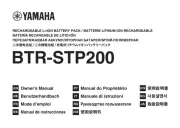
4 September 2025
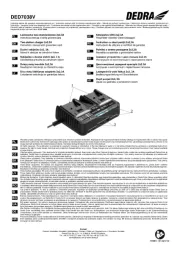
15 Juli 2025
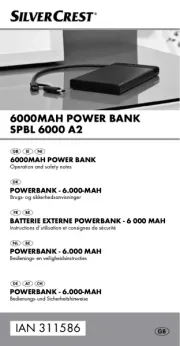
5 Juli 2025
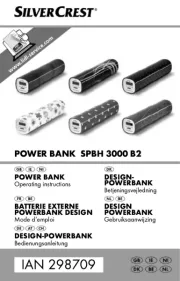
4 Juli 2025
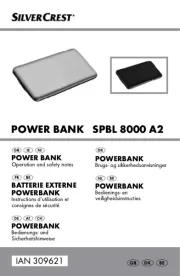
4 Juli 2025
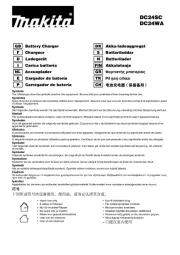
1 Juli 2025

2 April 2025
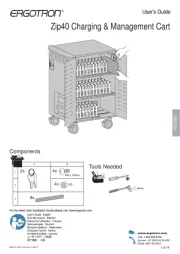
2 April 2025

2 April 2025
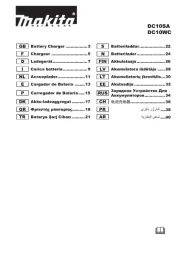
29 Maart 2025